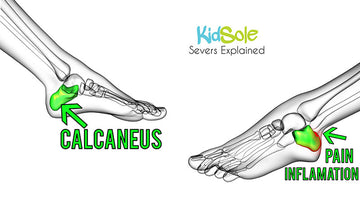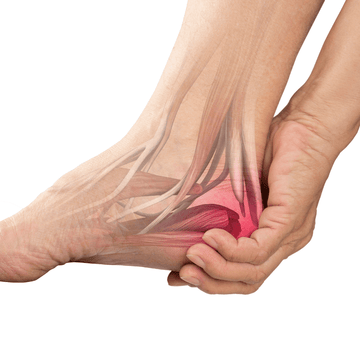If your child starts to complain about heel pain, your pediatrician may start looking for something called Sever’s Disease. Here are the key things you need to know about this common foot problem in growing, active kids.
What is Sever’s Disease?
Although the name of the problem sounds terrifying, Sever’s Disease is a fairly common childhood injury to the heel. The growth plate in the heel becomes inflamed through active use, and this causes pain. The inflammation is most likely to occur during growth spurts in adolescence. These most commonly occur between ages eight and thirteen for girls and ten and fifteen for boys. The back of the heel has usually finished growing and fused by age fifteen, so this rarely occurs in older teens.
What are the risk factors for Sever’s Disease?
Sever’s Disease most commonly occurs in active kids because of the way their tendons and muscles attach to the heel. Activity that involve running and jumping, like gymnastics, basketball, soccer, and track, are most likely to cause this heel injury. Other risk factors include:
- Pronated feet (foot rolls in at the ankle while walking)
- Very flat or very high arch
- Short leg syndrome
- Being overweight
How can I tell if my child has Sever’s Disease?
The most commonly reported symptom with Sever’s Disease is tenderness or pain in the heels, usually at the back. Pain can extend through the sides and bottom, and the child usually feels discomfort when the heel is squeezed on both sides. They may also experience:
- Redness and swelling in the heel
- Difficulty or pain while walking
- Stiffness or discomfort in feet when they wake up
- Walking with a limp or on tiptoes due to heel pain.
What can parents do about this condition?
The primary treatment for Sever’s Disease is rest; ultimately, the condition will heal itself once the inflammation is given a chance to resolve. Doctors tend to focus on pain relief during this time, recommending:
- Strengthen and increase flexibility in the foot and leg to allow the foot to move more naturally and reduce pressure in the heel
- Ice the injury for 20 minutes at a time, two or three times a day. It’s important to do this even on days when the heel isn’t as sore
- Use an elastic wrap or compression stocking to reduce swelling
- Use over-the-counter medicines to relieve pain and reduce swelling.
From there, parents often want to know what they can do to prevent the injury from recurring. One of the most important tools to reduce heel pain is to make sure kids’ shoes fit well, with shock-absorbing soles. This will be especially true for shoes that kids where during activities, like sports or during play.
Continuing to ice the heel while stretching and strengthening the foot and leg can help to keep the heel from becoming inflamed again.
If the child has pronated feet or high or flat arches, heel pads, heel lifts, or arch supports may be recommended to better support the foot and reduce pressure on the tendons.
If your child has been diagnosed with Sever’s Disease and you’re wondering what shoes or insoles might be right for your child as they return to activity, get in touch! We will bring our years of experience to bear and help you find just the right solution for your child. Reach out to us today.




